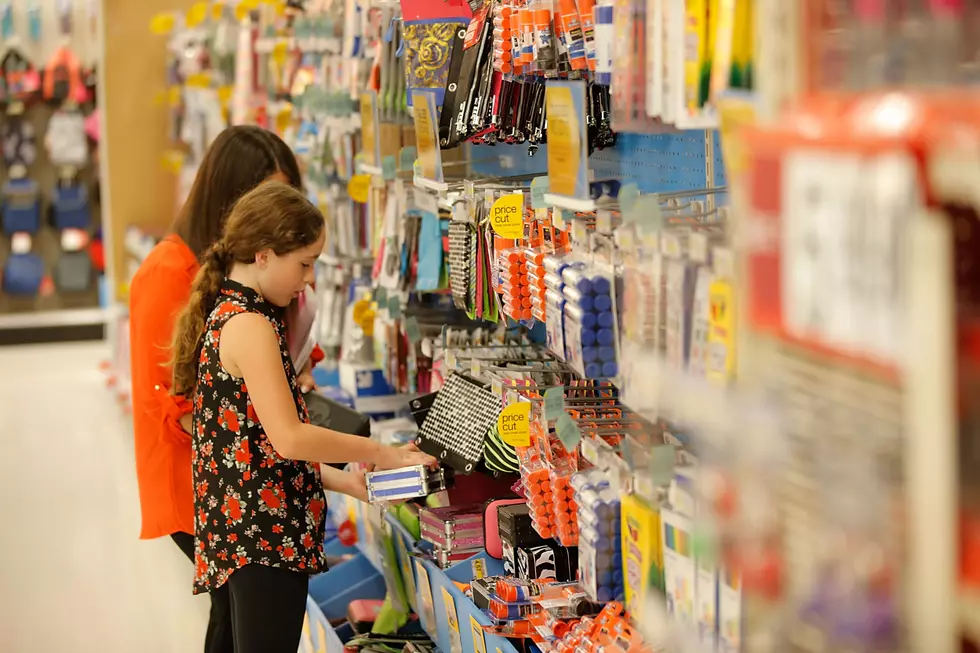
If You Hear ‘Code Brown’ Over the Intercom While Shopping in Louisiana, Call 9-1-1 and Get Out Fast
It's hard to avoid shopping in Louisiana. We're always in need of something, and modern convenience makes it easy to find exactly what we need and when we need it. Walmart, Target, Dillard's, wherever.
The longer you spend in a store, though, the higher the odds you'll hear some announcements over the store's PA system (it occasionally might even drown out the Muzak (if that's still a thing?).

But some of those announcements are for the customers. You need to know if there's an accident somewhere, an aisle to avoid, or... something a lot more dangerous.
Stores and other facilities often use different color codes for emergencies as a way to convey critical information quickly and efficiently. The use of color-coded systems is part of broader emergency preparedness and response plans. Here are some reasons why color codes are used:
Quick Recognition: Colors are easily recognizable, even from a distance. In an emergency situation, the ability to quickly identify the nature of the emergency is crucial for both employees and emergency responders.
Reduced Language Barriers: Color codes can be understood by people who may not speak the same language. In a diverse workplace or community, using colors can help convey important information without relying on specific words.
Consistency and Standardization: Standardized color codes help ensure consistency across different organizations and industries. This consistency is important for emergency responders who may need to navigate different environments.
Minimizing Panic: Using color codes can help minimize panic and confusion. When people see a specific color associated with a particular type of emergency, they can react appropriately without the need for detailed verbal instructions.
Memorability: Color-coded systems are often designed to be easily memorable. Training programs can reinforce the association between colors and specific emergency procedures, making it more likely that individuals will remember what to do in a crisis.
Accessibility: Color coding can be accessible to individuals with visual or hearing impairments by incorporating other elements such as symbols or text. This ensures that emergency information is accessible to everyone.
Common examples of color-coded emergency systems include:
CODE BROWN
A 'Code Brown' means there is an active shooter in the store. It could also refer to other violent acts in play that don't necessarily involve a gun, but the key word is 'violent' when it comes to code browns. I'd get out fast IF you safely can. No matter what, instructions will follow. This is also a usable code if there is someone threatening violence outside the store
CODE GREEN
A 'Code Green' is an active hostage situation, so again, use your best judgment, knowing full well that instructions will follow.
CODE BLUE
'Code Blue' means someone has called in a bomb threat. I don't know about you, but I don't care if they're usually fake. I'm leaving immediately, and chances are, that's what the instructions will tell all of us shoppers to do, too.
CODE RED
'Code Red' means there's a fire, and whether it's spreading rapidly or not, it's time to leave.
CODE ORANGE
A 'Code Orange' is a chemical spill. This is different if you're in a hospital, according to The Province. There, it means mass casualties and unforeseen disasters outside the hospital.
CODE WHITE
'Code White' is an accident of some kind in the store that isn't a direct danger to shoppers.
CODE BLACK
If you hear 'Code Black', that means we have super severe weather outside, and they will most likely receive instructions not to leave. The store might also close immediately because of the impending weather, and try to get everyone out and home safely.
Keep an Ear Out
It's important to note that while color-coded systems are widespread, there may be variations between organizations, so familiarity with the specific codes used in a given setting is crucial for effective emergency response. Additionally, these codes are often part of a broader emergency response plan that includes clear communication channels, training programs, and drills to ensure that individuals are prepared for various scenarios.
Most Feared Weather Events in Louisiana
Gallery Credit: Tracy Wirtz
More From Classic Rock 105.1







